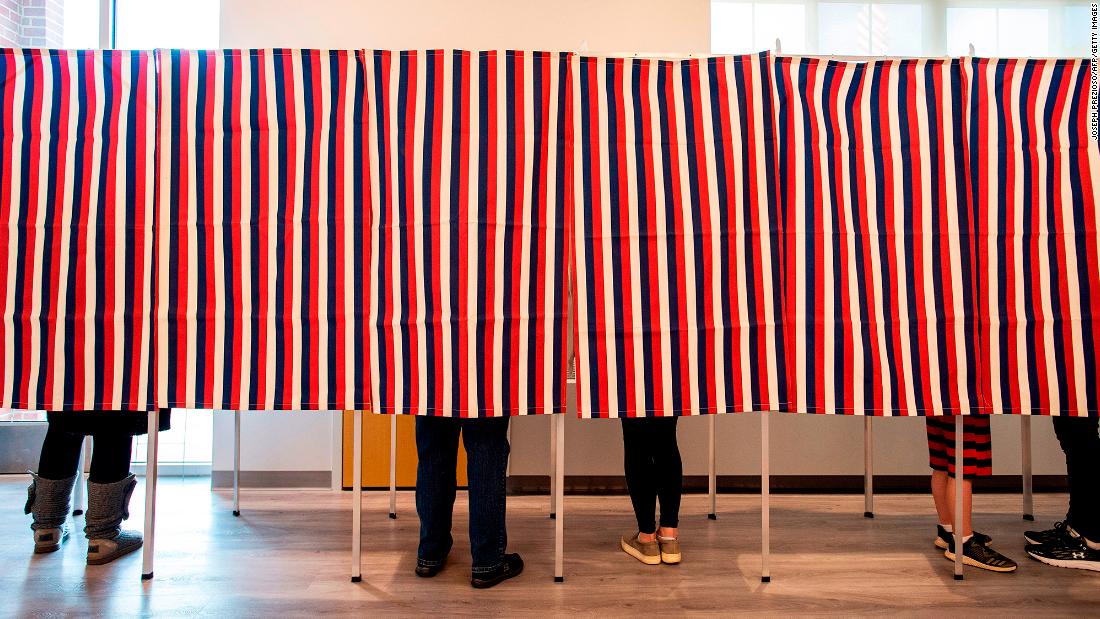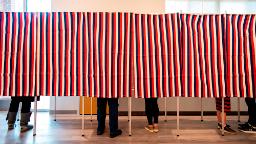

Welcome back to the CITIZEN newsletter after a brief vacation hiatus. In this edition, we’re focusing on a single big topic: ranked-choice voting.
Some critics of the US election process argue that when most voters head to the polls in November, they don’t really have much of a choice on their ballots.
That’s because legislative and congressional districts have been carved up — largely by politicians themselves — to make the maps so heavily Republican or Democratic that the people who vote in primaries have effectively picked the general election winners. And that means die-hard partisan voters — rather than the broader electorate — exercise enormous sway over who holds elective office in this country.
So, some places are taking a different route.
Here are the results of the exchange, lightly edited for length and clarity:
Q: First, the basics. Can you explain ranked-choice voting and where we’ll see it play out in the upcoming midterm elections?
In RCV, voters get to do more than simply vote for one candidate. They rank the candidates in the order they prefer them, and voters can typically rank as many candidates as they would like to. So if five candidates are running, voters can rank them 1-5. The system gives voters a way to express their views about a number of candidates, not just one.
If no candidate gets a majority of first-place votes, then a candidate is eliminated and the votes on the latter’s ballot are then given to the candidates who were ranked second on those ballots. There are different versions of RCV under which the rules for determining which candidate gets eliminated vary, but in the version used thus far in the US, it’s the candidate who gets the fewest first-place votes who is eliminated. So if I rank candidates A, B, C in that order, and candidate A is eliminated, my vote will then go to candidate B.
In the midterms for national offices, we are going to see RCV used for the first time in Alaska, including for their important Senate race, in addition to House races. The Alaska Senate race will be a particularly interesting test of RCV, because GOP Sen. Lisa Murkowski might have lost support among Republicans, based on her vote to convict then-President Donald Trump after the January 6, 2021, attack on the US Capitol. But she has always had broad appeal across the electorate, including Alaska’s large number of independents, as well as some Democrats. Her chances might be much better in an RCV election than a traditional plurality-vote system — a system in which whoever wins the most votes, when voters can vote for only one candidate, wins the office.
The August 16 general election will use RCV, and if Palin is a factional candidate, while Begich draws broader support, he might well defeat her.
Our traditional system of plurality-vote winners means factional candidates in crowded primary elections can end up winning nomination. In a crowded field, winning 30% of the vote can be enough to win the contest. If two candidates like that emerge from the two parties’ primaries, voters end up faced with a choice between two factional candidates — who might be two ideologically extreme candidates.
In addition, this system encourages negative styles of campaigning, because candidates are essentially pitted head-to-head. It also raises the risks that third party or independent candidates will become spoiler candidates — they will take away votes from candidates who have similar positions to their own, and thereby enable candidates with whom they strongly disagree to get elected. As a concrete example, in 2000, Ralph Nader likely attracted enough voters who would otherwise have voted for Al Gore to enable George W. Bush to win Florida — and thus become President.
RCV, by contrast, encourages the election of candidates with the broadest electoral appeal. It also makes it likely that candidates who win will have the support of a majority of voters. A factional candidate might get 30% of the vote, but if that candidate doesn’t attract wider support, they won’t succeed in an RCV system. The system encourages candidates to reach out to voters who might not prefer that candidate as their first choice, but whom the candidate still wants to persuade to rank them second or third. In that way, it also encourages less hostile forms of campaigning. I do not want to brutally tear down an opposing candidate, because I want their supporters still to think well enough of me to rank me second or third.
RCV also reduces the risk of spoiler candidates and so does not force voters into artificial choices. Suppose a moderate and a progressive (or staunch conservative) are running. I might prefer the progressive, but worry about whether that candidate is electable, and I have to decide whether to vote my sincere preference or vote for the more electable candidate. But with RCV, I can rank the progressive first and if they do not have enough votes, my vote will transfer to the moderate candidate.
Q: Where has it worked? And do you expect it to spread elsewhere?
Six states — Alabama, Arizona, Georgia, Louisiana, Mississippi and South Carolina — use RCV for military and overseas voters. (They are used in the event a runoff election is required, for which those voters will not have enough time to receive and cast a runoff ballot.)
The only statewide use of RCV until recently has been in Maine; Alaska will now become the second state.
As you see, RCV has been adopted in red jurisdictions, blue ones and purple ones.
There has definitely been an upsurge in adoptions of RCV even in the last few years. I think that’s a reflection of frustrations with how polarized our politics and choices have become. Whether it continues to spread elsewhere will probably be a function of how it’s perceived to go in high-profile races and places, such as in Alaska or Maine.
If it works as proponents believe, I would expect more adoptions to follow.
Q: If ranked-choice voting is such a good tool for curbing political extremism, why isn’t it used more broadly?
I don’t think RCV is a magic elixir to cure extremism. I think it can help, but I would not oversell it. But incumbent officeholders are not inclined to change the rules under which they got elected (unless they think some change will make it even more likely they will stay in office).
So elected politicians are not likely to lead the charge for RCV. And in general, Americans are very reluctant to change voting systems with which they are familiar and that they have used for many years. That’s understandable. Now that we have 55 or so jurisdictions using RCV, voters will get a chance to see how it works out in practice. If it’s perceived to improve our politics, more voters will be willing to endorse it.
Q: OK, ranked-choice voting probably isn’t the cure for all that ails American democracy. What other changes need to happen in your view?
How big will you let me go? There are changes that largely stay within our existing structures. So I believe redistricting should give much more weight to the value of creating competitive districts, rather than the current reality in which around 90% of seats are safe for either party.
I think the current structure of primary elections is a major force fueling extremism; I would like more states to experiment with structures like the top-four primary system Alaska has adopted.
The current system of campaign financing also helps fuel extremism; traditional forms of publicly financed elections, which 10 or so states use, could combat that (but not systems in which government matches contributions from small donors, since ideologically more extreme candidates benefit much more from small donors than do more moderate candidates).
In our presidential nominations process, I would like to see us find a way to give some distinct weight to the view of elected party figures from throughout the country, along with the view of primary voters. Those figures are likely to have more direct experience with potential candidates and insight into whether they will be competent leaders. We have largely eliminated all the intermediary, mediating institutions in our politics, which is part of why we have ended up with a politics increasingly dominated by outrage and extremism.
You need to read
- A comprehensive, minute-by-minute timeline of the January 6, 2021, attack on the US Capitol by CNN’s Marshall Cohen and Avery Lotz. It weaves in new information from recent public hearings of the House select committee examining the insurrection. The committee’s next hearing, meanwhile, is slated to begin Tuesday afternoon and will focus on the role of extremist groups.
- Simone Pathe’s latest CNN installment of the 10 US Senate seats most likely to flip this fall. Newsflash: She’s added Colorado to the list, where Democratic Sen. Michael Bennet’s reelection bid got more competitive after businessman Joe O’Dea won last month’s Republican primary.
- Some deep dives into the Supreme Court’s decision to consider what critics say is a fringe constitutional theory that could upend how American democracy works. The case, centered on a North Carolina voting map, could give state lawmakers broad, independent powers to decide how federal elections are run without subjecting those decisions to review by state courts. We’ve written about this “independent state legislature” theory in an earlier newsletter. But it’s getting a lot more attention now. Our CNN colleague Zach Wolf examined it in a recent edition of the What Matters newsletter. And the crew at FiveThirtyEight looked at what it could mean for partisan gerrymandering.
- My quick take on the Wisconsin Supreme Court prohibiting the use of most ballot drop boxes — a decision with big implications for crucial races in this battleground state this fall — and in 2024.
- This piece on the US Department of Justice suing to block an Arizona law that would require proof of citizenship to register to vote in the state. As the New York Times notes, the lawsuit marks the fourth time that the DOJ, under Attorney General Merrick Garland, has challenged a state’s voting law.
